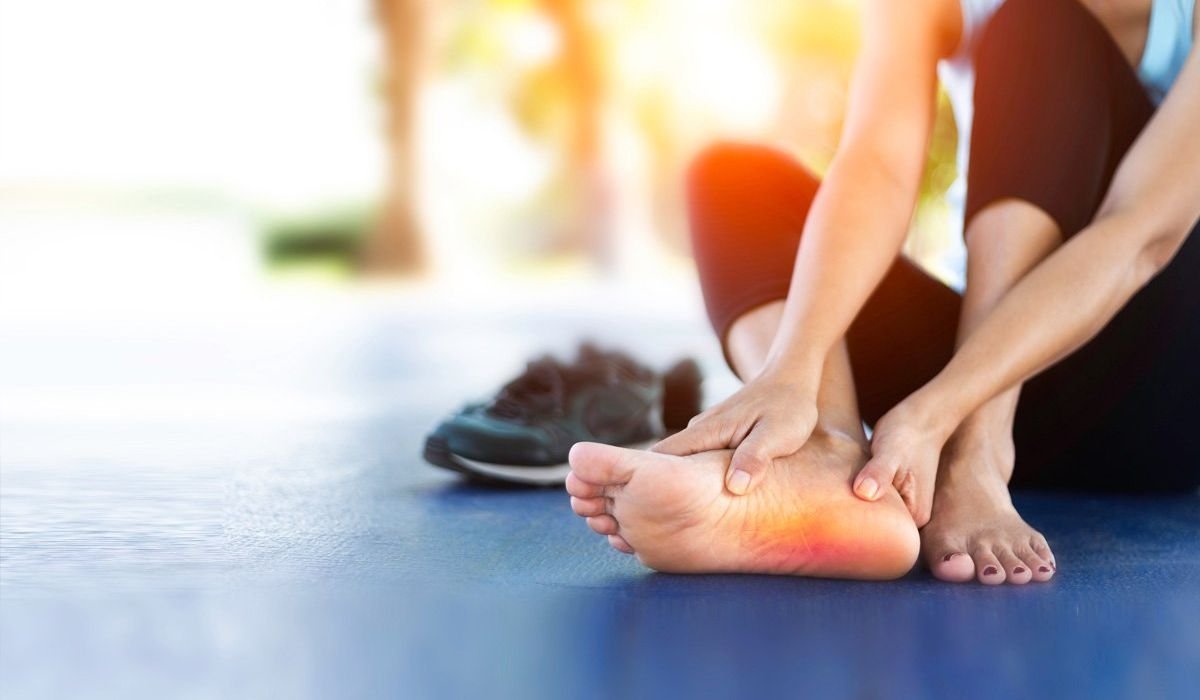What Are the Best Home Remedies for Plantar Fasciitis?
Plantar fasciitis hurts the heel, especially in the morning. The plantar fascia, a thick foot muscle band, grows. Walking may hurt, but you don’t always need expensive treatments. Easy home treatments help with discomfort. Stretches to release stress include those for legs and toes. Cold packs applied for 15 to 20 minutes help to lower oedema. Hip-supporting shoes put less strain. Massaging or sliding a cold water bottle under your foot might help with soreness and boost blood flow. Painkillers sold over the counter might help with oedema.
What Is Plantar Fasciitis?
The heel and sole hurt with plantar fasciitis, and plantar fasciitis treatment UK can provide relief for those suffering from this condition. Those with high arches, flat feet, or unsupported shoes often have this issue. The most obvious clue is sharp heel pain, particularly in the morning or following rest. Moving around may assist, although standing or walking for lengthy periods may hurt. Exercise, injections, or braces may be needed in extreme cases. It can be uncomfortable on heels and make walking difficult without treatment.
Importance Of Early Treatment For Plantar Fasciitis
Treat heel fasciitis right once to prevent long-term pain and problems. Ignoring the problem can cause persistent heel pain that makes standing and walking challenging. Healing slows with swelling of the plantar fascia. Early treatment helps to lessen stiffness and discomfort. Simple habits like working out, icing, and donning supportive shoes help to avoid more damage. Avoiding contact sports and allowing your feet a vacation helps hasten recuperation. Plantar fasciitis can damage your knees, hips, and back without therapy, therefore affecting your walking pattern. See a doctor as soon as you start symptoms to speed recovery and prevent long-term foot problems.
Best Home Remedies For Plantar Fasciitis
Although plantar fasciitis is painful, you may ease the symptoms and hasten home rehabilitation. Ankle and toe stretches help relieve the plantar fascia. Another easy fix is a 15 to 20-minute ice pack on the heel. This reduces soreness and oedema. To prevent foot problems, use arch-support shoes. If you have this condition, steer clear of hard surfaces barefoot. To increase blood flow and feel better, massage your feet or lay a cold water bottle or tennis ball under them. Though only when needed, ibuprofen and other over-the-counter medications can help with swelling. Resting and elevating your foot also helps stop more damage and speed recovery.
Effective Stretches For Pain Relief
Stretching stops aggravation of heel fasciitis and helps with pain. Tight muscles released by calf exercises help the plantar fascia to relax. Face a wall one foot after the other. Plant your back heel and bend your front knee. Spend thirty seconds holding; then, flip sides and repeat. Lean down and gently stretch your arch by bringing your toes towards you. Foot rolling is another great exercise. Rolling a frozen water bottle or tennis ball under foot stretches the fascia. At last, towel stretches span the arch by covering your foot and gently separating it. Daily use of these exercises can help to lower pain and improve flexibility.
Using Massage For Healing
Massages relax plantar fasciitis, lower stress, and boost blood flow. Things will be released using a foot massage ball or your hands. With fingertips, gently push on your foot arch from bottom to top. For only a few minutes. Rolling a frozen water bottle or tennis ball under foot will help you to attain a deep muscle massage and pain alleviation. One further effective technique is heel pressing. Massaging and gently massaging the heel releases strain. To unwind your legs, either before a walk or at night, get a massage.
Footwear And Insoles For Comfort
Change your shoes to prevent plantar fasciitis symptoms. Shoes featuring arch support, cushioning, and a strong heel help the plantar fascia. Steer clear of flat shoes, flip-flops and barefoot walking on uneven ground. Daily wear should be orthopaedic or shock-absorbing running shoes. Insoles provide warmth and support. Orthotic insoles distribute weight, therefore relieving heel discomfort. Gel or foam insoles help to warm and support your feet, therefore facilitating standing and walking.
Role Of Diet In Recovery
Reduced inflammation from a healthy diet can heal plantar fasciitis. Added to food and beverages, turmeric and ginger help lower inflammation. Drink plenty of water to prevent tight muscles. When one is sufficiently hydrated, foot tissues remain flexible. Dairy, almonds, and meals enhanced in calcium and vitamin D include these elements. These minerals support foot health and strengthen bones. Good shoes, stretching, and diet help you heal faster and less painfully.
Alternative Therapies
Apart from consistent treatments, several approaches could speed up the recovery from plantar fasciitis. Thin needles used in acupuncture boost blood flow and help to reduce oedema. Many say it speeds recovery and lessens discomfort. By concentrating pressure points in the feet and legs, deep tissue massage, reflexology, and other therapies loosen plantar fascia and boost blood flow.
Also, read: Dental Implants Hungary Helvetic Clinics







